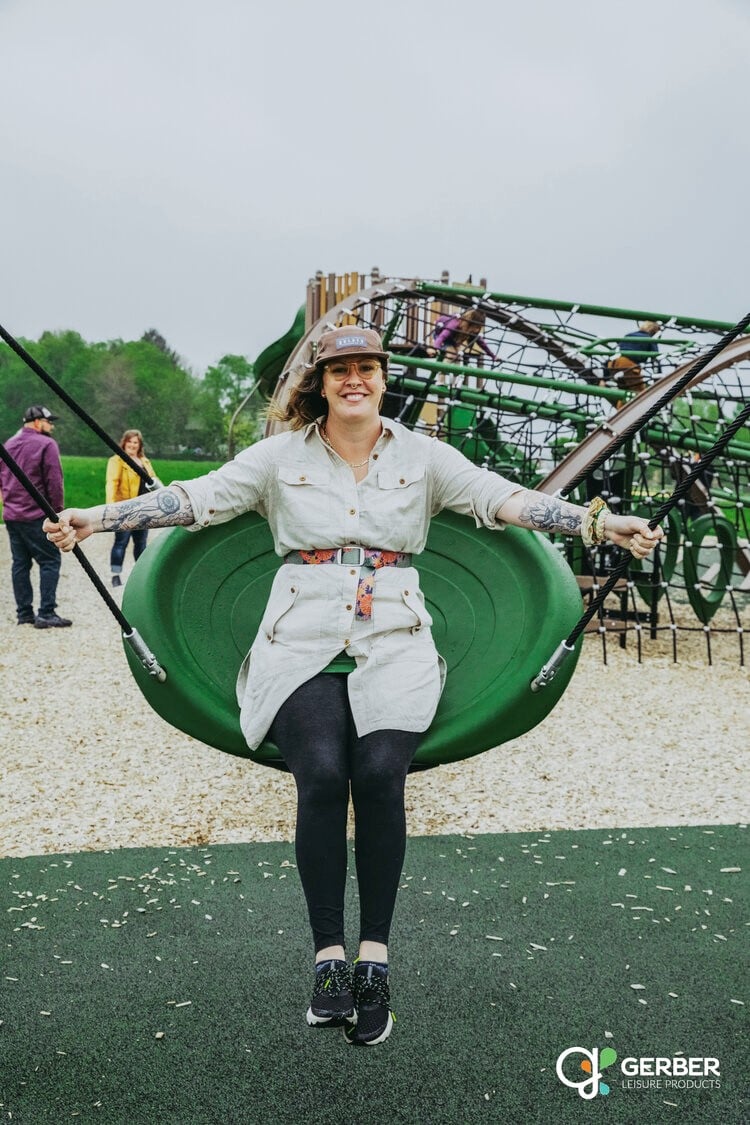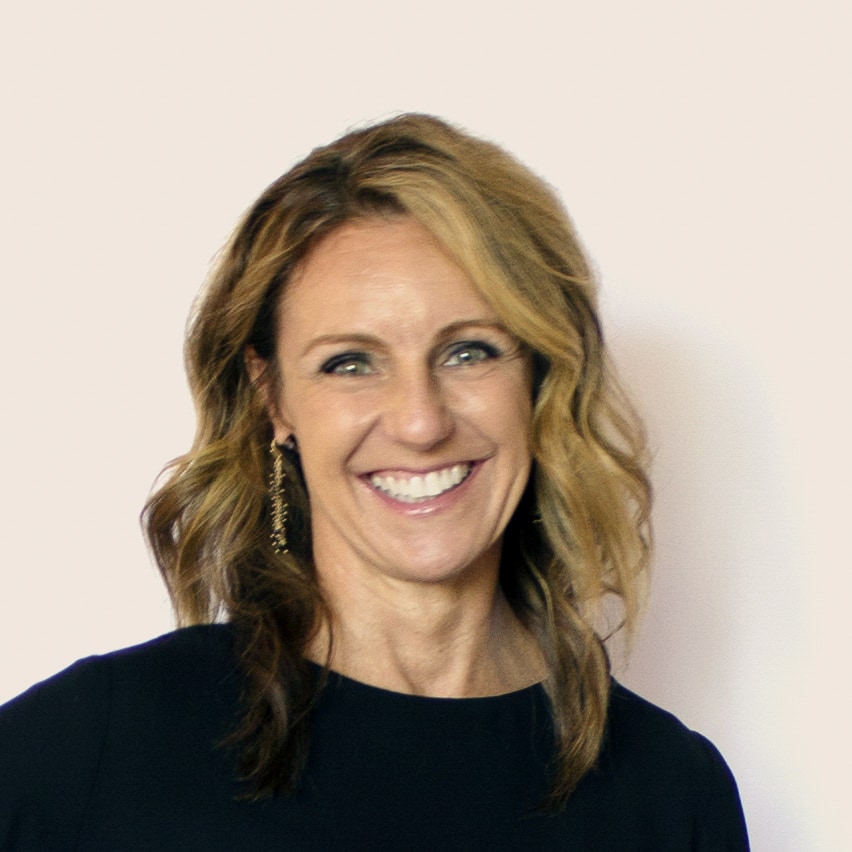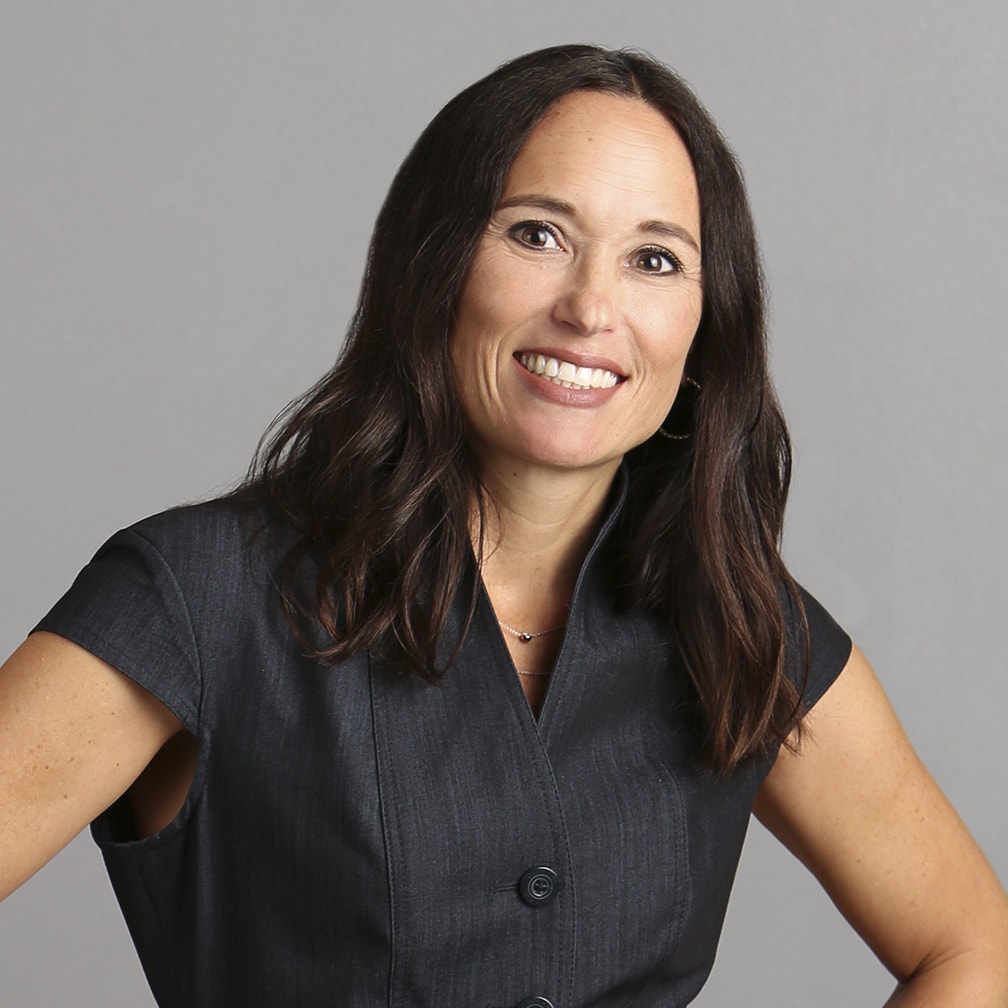7 Business Leaders Bringing Adaptive Resilience to Life

In late 2021 when The DRG added a component to our website focusing on Adaptive Resilience, we knew we had tapped into something big. Adaptive Resilience puts an emphasis on quickly realigning to capitalize on shifting circumstances and finding success in doing so. But really the best way to define it is by bringing it to life through the business leaders who are leaning into an Adaptive Resilience mindset every day to propel their companies forward during uncertain times.
We wanted to talk to our own CEO as a leader in Adaptive Resilience and we also know there are so many more stories out there that we could benefit from. Stories from clients, professional colleagues, and new partners who were willing to connect with us in the spirit of sharing how Adaptive Resilience is working for them. We were blown away by the response. With that, it’s time to put the spotlight on them.

Rose Gailey
Heidrick Consulting, Global Lead, Organization Acceleration & Culture Shaping
The DRG reached out to Rose since her company is an executive search firm serving more than 70% of the Fortune 1000 in the midst of the Great Resignation.
“It’s been an incredible period of time, of change, development, and pause, and reflection on the part of the work force. And it has led to a heavy recruitment schedule with a lot of need and a lot of opportunity.”
Rose says the firm approaches its work by looking at “how does this leader embrace the future?”
“Much of what is behind Adaptive Resilience is recognizing that leaders in organizations really shape their cultures. You have to be cognizant of the cultural impact of that leader. The notion of culture is the antidote to the Great Resignation.”
“Reinforcing empathy and having that dialogue and open communication is like oxygen for people in times of stress and uncertainty.”
Rose says that focus on culture also turns inward at her company.
“Our CEO and CHRO ran continual pulses starting in 2020 and 2021. There were immediate responses to that that fortified resilience, like policies around PTO, and small gestures, like making the ‘Calm’ app available to every employee. Our CEO took advantage of World Mental Health Day and called the business off for that day. There is the constant message of balance. We love to work hard and win, but to do it, you have to be healthy, strong and resilient. The firm took it to a personal level.”

Barbara Humpton
CEO of Siemens USA
The DRG connected with Barbara after seeing how she has previously spoken on the topic of resilience in print and via her podcast. Siemens USA employs 40,000 people in the U.S. and Puerto Rico, generating $17 billion through technology that supports manufacturing, energy, healthcare, and infrastructure.
“For us, it’s about empowerment. Early in the pandemic, Siemens announced flexible work would be our new normal, encouraging remote work two to three days a week so people had more ownership over their workday. Choose where you work best. And it’s a snapshot of a workplace culture that’s shifting the mindset from hours worked to outcomes achieved and championing empathy as a key leadership trait.
As we’ve seen during ‘The Great Resignation,’ people can write their own tickets. They can work anywhere. So it’s up to us to ensure that our employment value proposition is so compelling that people are engaged and energized by their work at Siemens. They want to stay. I also think a critical piece of this is creating spaces where people can grow.”
“What if we transformed the ‘Great Resignation’ into the ‘Great Reassignment,’ in which we open doors for people to explore new areas they are interested in, even reinvent their careers?”
“We want people to find joy in the work that they do.”

Blake Mathies
Purple Mountain Solutions, Inc. Co-Owner
The DRG shared statewide honors recently with Blake’s company when winners of the Wisconsin MARKETPLACE Governor’s Awards were announced. Purple Mountain Solutions is owned by service-disabled veterans and specializes in logistics and supply chain management.
Blake has worked for 25 years in the supply chain industry,
“This is an unprecedented time.
We’ve never seen anything like it.”
“The global supply chain is a system and what is really wrong right now is the system is out of balance. What we do is try to help our customers navigate that.”
Part of his company’s Adaptive Resilience approach has included diversification into the medical supply chain. The company is involved in moving COVID-19 tests to labs and transporting vaccines. In just the last month with cases surging, that part of the business is up 20 percent. Blake says moving into that sector has helped attract workers. He says they “love the importance of it and the criticality of it.”
Listen as Blake describes how his company has adapted and grown, in spite of challenges. One strategy – hang on to vehicles with eye-popping mileage on the odometer.
Blake acknowledges his company is not immune from its own supply chain issues. Periodic shortages of workers, vehicles, and real estate for warehousing have presented challenges. The Adaptive Resilience solution for Purple Mountain has included employee flexibility, where team members pitch in as needed, even if it’s not in their job description.
“What’s kept us resilient is creating a culture where we need to be prepared for everyday to be different. Creating that culture is tantamount to what we need to have happen.”
The day Blake spoke to The DRG, he was dressed in a hoodie because as soon as the conversation wrapped up, he planned to pitch in as a driver.

Hollie Rickey
President, Gerber Leisure Products
The DRG also shared statewide honors in 2021 with Hollie’s company – another winner of the Wisconsin MARKETPLACE Governor’s Award. Gerber Leisure, like The DRG, is a women’s business enterprise. Gerber is in the business of changing the landscape of playgrounds and building on the ‘Legacy of Play.’
“I had an English teacher in high school who always used to say to me, ‘Life is a game and you gotta play by the rules.’ (A quote based on The Catcher in the Rye.) I always hated this idea and I have always been pushing back against ‘this is the way it is’ in any format I meet it in. Gerber has always encouraged new ideas, honesty, integrity, and the pursuit of great problem-solving skills.”
To that end, Hollie teamed up with some of her colleagues to collaborate on this response regarding what Adaptive Resilience in 2022 looks like for Gerber:
“We have set some really exceptional goals for 2022 that are all about adapting, including tackling new projects, unlike anything we’ve done before by jumping into the splash pad world. We have adapted our work schedule to fit what works, not necessarily ‘what is always done,’ and have found incredible success in doing so.”
“Our team isn’t held to work hours simply to fill a seat.”
“Shifting from a typical office environment to a virtual workspace was necessary, and as a group, we took it a step further by eliminating the need for meeting required ‘hours.’ We have seen increases in our productivity, higher sales, even better customer relationships, a boost in team satisfaction and pride, we’ve been recognized and awarded for our work, and more! A willingness to eliminate antiquated ways of working that don’t serve us has proven to enhance almost every aspect of what we do.”

Steve Marsho
Partner at Jigsaw LLC
The DRG knows our clients are practicing Adaptive Resilience. Building on our long-term client relationship with Jigsaw LLC, Steve Marsho shared with us some of how Jigsaw has pivoted. Jigsaw is an award-winning agency specializing in the full strategic process, from planning, to inspired advertising and content, to gainful media.
“We were all faced with a situation no one had ever faced before and we had 8,000 square feet in downtown Milwaukee and I am the only one going into the building. It became clear really quickly to me and my business partner within a month, that we would never, ever, ever go back to doing what we were doing. From our perspective, you can lament that fact or you can reinvent yourself and how you work and adapt to it. That’s essentially what we did. We moved out of our space. We redefined how we work together. And so far, it’s worked.”
Last summer, Steve posted a piece of thought leadership to declare that the company is now operating as a 17-year-old startup. That’s part of the Adaptive Resilience approach.
“I had been more of a traditionalist relative to working at home prior to COVID. I am a complete convert.”
“As long as the work is getting done and it’s getting done well, when and where people do their job is irrelevant.”
Listen as Steve describes how he took inspiration from watching the way his healthcare clients practiced Adaptive Resilience.
Steve says adaptation and resilience were also needed to maintain the creative process that is the lifeblood of the business.
“Given the business we are in, which is a creative business that thrives on camaraderie and codependence and ideation, we needed more than what Zoom calls could offer. We can try to be collaborative on a call, but it was clear to me that it wasn’t as effective as when we were all in a room. So part of what we did, for instance, was we moved out of this huge space. We moved to a space that is maybe 1,500 square feet. We have two buildings. One is what we call the ‘Collab Lab’ where people come in to collaborate. And the other is a little house we have adapted. So if you want a space to come in a couple of days a week to get away from your personal life stressors and distractions, you can do that… Honestly, we’re better for it.”

Dawn Lesniewski
Director of Marketing, GROTH Design Group
The DRG joined GROTH Design Group in 2021 in being named one of the ‘Best Places to Work’ in the Milwaukee area. The bulk of the architecture company’s clients are in the healthcare, education, religious, and corporate sectors – all areas heavily impacted by the pandemic.
“We’ve had to pivot in places we have never had to pivot before. An example that comes to mind is in the education field. They clearly struggled. It was a huge challenge. We had to pivot as far as re-learning and trying to come up with solutions for designing these spaces that makes sense for the way things are now being taught and the way students are now learning.
In healthcare systems that we work with, obviously making sure that the environments are safe is huge, but it’s also important that we’re designing spaces that are healing for individuals and providing sanctuary. The physical environment of what we design is a piece of the puzzle. There are so many other aspects, like designing for health and safety for people. How do we get better air flow through facilities? Today the air quality is top of mind, because we have concerns about spreading disease more easily. It’s not that it shouldn’t have been top of mind before, but it’s almost like the pandemic pushed many of these questions that should have been asked for a long time back to the forefront as a priority.”
“The demand is different post-pandemic for probably every market we serve.”
“When you get into our religious market sector, we’re re-thinking how spaces can be reutilized. More and more we’re seeing that spaces need to be designed so they are flexible. Churches went from say 600 in a congregation and now post-pandemic, many are trying to rebuild. Now there is a space that is larger than what they need.”
Dawn says GROTH’s founding motto has been key to the company’s Adaptive Resilience: Listen, lead, serve.

Lanie Johnson
President, Chief Executive Officer, The DRG
As The DRG’s CEO, Lanie has championed an Adaptive Resilience mindset for the company and is pleased to share her thoughts alongside these other business leaders.
“Early on in the pandemic when some of our clients had to pause or cancel projects, we knew that so much was changing so quickly. Consumers were changing how they were behaving and their attitudes and shopping were shifting. We didn’t want our clients to miss out on that information and opportunity. So we conducted several rounds of research across multiple industries to still be able to provide that valuable insight to our clients. In terms of our resiliency, we were able to take in a lot of data to help us move forward and to help our clients move forward.”
“We have always taken the approach that we can’t control everything that happens to us, but we can control how we react to it.”
“And that is when our leaders need to lead. As a leader, you have to believe change will make us stronger.”
The DRG was already ahead of the game to some extent when the pandemic hit, in that the company always prioritized flexibility for employees. It was a key part of the company’s culture and a differentiating factor. That provided a playbook to work from when shifting from 10-percent remote work to 100-percent. But a couple of areas of the business did not have any “work-from-home” capacity prior to 2020. One example was The DRG’s Call Center which gathers direct feedback from consumers and businesses on their experiences and the products and services they use. Initially, it was hard to imagine moving that function to remote status because of the technology being used and the operational processes. But that is exactly what happened when The DRG applied Adaptive Resilience. Lanie recalls how it went.
“We challenged ourselves. What is in our way? Let’s lay out the barriers and find answers to them. Within a couple weeks, we were able to set up everything 100-percent virtually. We had our Technology Services team actively working with all those individual employees to get them optimally set up from home. It was a pretty big feat. There were so many kinks to work out, but we did it. It was a great pivot and the success we experienced gave us confidence to adopt a program that now regularly allows employees to work remotely or in a hybrid fashion throughout the various departments of the company.”
Listen as Lanie speaks to using Adaptive Resilience to help bring more ‘lightness’ back into employees’ lives.
Lanie says robust, empathy-focused communication continues to be key to getting everyone on board in embracing the Adaptive Resilience mindset.
“From our experience, what has worked is transparent and frequent communication. A lot of times, leaders don’t want to talk about issues. They want to give the impression there isn’t a problem and that they know every move they are going to make. Our team has embraced being transparent about the issues we are facing as a company and communicating the reality of the issue, but also communicating that we are confident we are going to solve it. I think this kind of communication helps to empower each and every person, so they truly feel that they are a part of the solution.”
In creating this piece, we quickly realized that one blog post could never do the topic of Adaptive Resilience justice.
Over the course of 2022, we’ll be sharing out more Adaptive Resilience content, from time to time, to ensure that we help to keep this concept top of mind and to provide you with the deep dive this subject deserves.
We also want to thank all the individuals who gave their time so generously on behalf of their companies to speak to Adaptive Resilience. We look forward to sharing more of their stories with you in the coming months.
Do you have an Adaptive Resilience story to share? We’d love to hear it. Get in touch with us at DRGInfo@thedrg.com
Learn more about The DRG’s approach to…
